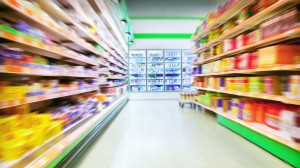INVERTING THE SUPERMARKET
May 18, 2015
What if we put the milk up front? Every day, we’re talking about designing technology around the user, taking the user point of view and ruthlessly following his or her preferences and needs. When we build apps or websites, the user-adoption is so important that we try to completely understand the users through personas and scenarios. Why then, when we go to a supermarket, is the milk still put in the back corner (and not upfront) making the ‘user’ cross the entire store to buy this most needed commodity? Is that for the benefit of the customer, or for the benefit of the store?
It’s common knowledge that this is done to generate business, to lure the customer deep into the store to make him or her buy more things. But what would happen if we really design a supermarket to optimize user experience? Recognizing there are different kinds of shopping trips and trying to offer the ‘shortest path to checkout’ for all of them?more–>
When I envision such a store, I see an almost concentric circular store, with an inner ring that is very functional, aimed at the bare necessities with minimal frills. Bright lights, stuff in boxes and aimed at mass efficiency: milk, bread, toilet paper, etc. This is where everybody goes. This is where you can do a quick in-and-out shopping trip. Then, in the rings around that are the things that are still commonly bought, but less so, this is where some staff is available to find things or recommend. And all the way in the back are the things that are luxurious, rarely bought and more expensive. At this end of the store, it’s quiet, there is soft lighting, classical music, a butler with white gloves for maximum personal attention. This is where you find the real delicatessen, the fanciest brands, caviar and champagne. This is where you go to get spoiled, to feel special and rich. I bet people would love to go there!
I would love to do this, as an experiment… but it’s probably an expensive thing to try, especially knowing that margins in retail are low to begin with. And that’s where we have the great advantage in the digital space: it’s cheap to try things. In the digital space, it’s easy to segment, to consider alternative uses and optimize for all. But still… does anyone have a supermarket to play around with?

 English | EN
English | EN 
